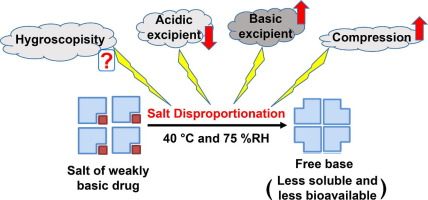- Home
- Blog
- News
- Basics
- Sources
- Agencies, Regulatory & Organisations
- CERSI Excipients Browser
- Excipient Report
- Excipient DMF List
- EXCiPACT Certified Companies
- Excipient Documentation
- Excipient EINECS Numbers
- Excipient E-Numbers
- FDA Inactive Ingredient List
- FDA GRAS Substances (SCOGS) Database
- IPEC Americas
- USP - U.S. Pharmacopeia
- Definitions
- Whitepapers / Publications
- Supplier
- Services
- Media
- Events
- 1st pharmaexcipients Poster Award
- Event Calendar
- Events featured by pharma-excipients
- 4th Annual Formulation & Drug Delivery Congress
- DDF Summit
- ExcipientFest Americas
- ExcipientFest Asia
- Global CompliancePanel
- International Conference and Exhibition on Pharmaceutics & Novel Drug Delivery Systems
- Formulation & Drug Delivery USA Congress
- Laboratory Medicine 2018
- Making Pharmaceuticals Europe
- Making Pharmaceuticals Exhibition
- Pharma Integrates
- PharmaExcipients China @CPhI China
- TTC Technology Training Center
- Jobs
- Online Sourcing
- Contact
21. May 2018
Excipients are crucial components of most pharmaceutical formulations. In the case of a solid oral dosage formulation containing the salt form of a weakly ionizable drug, excipient selection is critical, as some excipients are known to cause salt disproportionation (conversion of salt to the free form). Therefore, robust formulation design necessitates an in-depth understanding of the factors impacting salt disproportionation during processing or storage as this can negatively impact product...
30. January 2017
Abstract: This work is the continuation of a study focused on establishing relations between surface thermodynamic properties and in vitro release mechanisms using a model drug (ampicillin trihydrate), besides analyzing the granulometric properties of new polymeric materials and thus establishing the potential to be used in the pharmaceutical field as modified delivery excipients. To do this, we used copolymeric materials derived from maleic anhydride with decreasing polarity corresponding to...
18. March 2016
In this study, novel flavored taste masking film coating formulations were developed specifically for felines. Polymethacrylate copolymer (Eudragit® E) was used as an aqueous taste masking film former in different combinations with meat precursors and flavors selected on the basis of the feline carnivorous nature. Special attention was paid to the effects of flavors on the pH and colloidal characteristics of the aqueous film coating dispersions, and to the thermal behavior, mechanical strength...
17. February 2016
This study evaluated the effects of changing the amount of added water for moisture activated dry granulation (MADG) on the resulting granule characteristics and tablet properties. Water soluble fillers and binders were pre-mixed in a granulator, and the binder was activated by a small amount of water to form granules. The amount of added water was defined as the percentage of granulation water by mass to charged powder. Granules made with 0.0%, 1.0%, 1.5%, 2.0%, 2.5%, 3.0%, and 5.0% (w/w)...
06. January 2016
The structural and thermodynamic properties of glassy carbohydrate matrices for the encapsulation and biostabilization of sensitive bioactive compounds, such as pharmaceutically active proteins and oxidation-sensitive compounds, are reviewed in the context of the plasticization and antiplasticization of glassy carbohydrates of intermediate and high molecular weight by low molecular weight diluents. More

